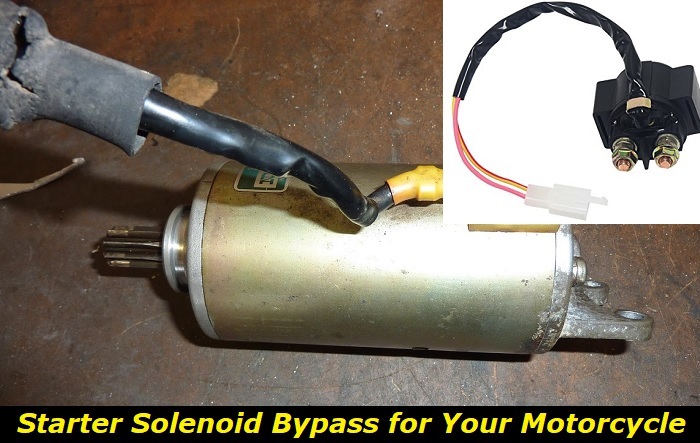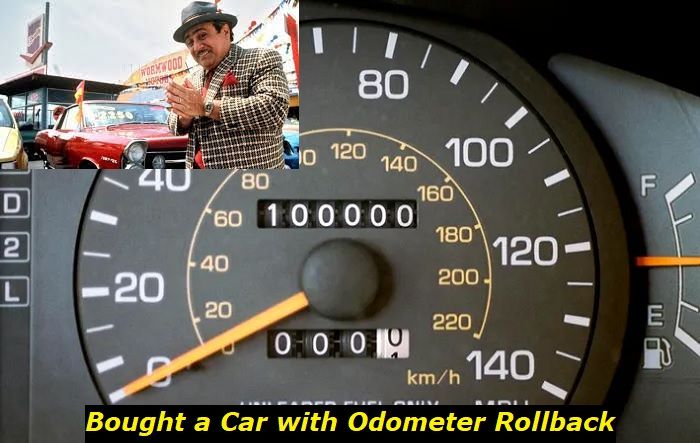Motorcycles have been around for many decades now. Over the years, these two-wheeled machines have been in use, and manufacturers and enthusiasts have found ways to update or modify how the motorcycle works. In some instances, some components have been removed, and others added to improve the performance, safety, efficiency, and reliability of the motorcycle.
In this article, we look at the motorcycle starter solenoid. We will explore whether a motorcycle solenoid bypass is a good thing to have on your bike. We also discuss how you should add a starter solenoid bypass to your bike.

Understanding the motorcycle starter solenoid bypass
A starter solenoid is an electromagnetic device attached to the starter and controls the starter motor. It is found in all internal combustion engines and acts as an actuating coil for the contactor or relay. In all modern motorcycles, you will find a starter solenoid which in some instances is referred to as the starter relay.
The design of a starter solenoid is such that it comes with two-part cores. One half of the core, called the armature, is mobile, while the other half is fixed. The electric current from the battery travels through the wire, creating magnetism which mobilizes the armature. This mobilization of the armature is what activates the motorcycle's starter.
A starter solenoid is part and parcel of the ignition system. A small electric current is passed through the solenoid when you turn the ignition switch ON. The starter solenoid will then close most of the heavy contacts hence able to relay a large electric current through the starter motor. The starter motor will then set the engine of the motorcycle in motion.
A motorcycle starter solenoid is made up of three components:
- The mobile core - The movable part of the solenoid is the one that is responsible for electromagnetism.
- The coiled wire - This is the wire responsible for the activation process.
- The electrical charge - The charge sets everything in motion
When you turn the ignition key to start the motorcycle, the armature moves, and the engine starts. When you let go of the ignition key or the start button, the solenoid becomes deactivated, forcing the core to move back to its original position and breaking the circuit. This is important because it stops any further attempts to start the engine after the engine has started running. Continued attempts to start the engine when it is already running can fry the starter motor.
How does the motorcycle starter solenoid work?
When you turn the ignition key or press the start engine button to start the engine, the battery provides a surge in power. The electric surge goes to the solenoid, generating an electromagnetic field. The electromagnetic field surrounds the moveable part, the armature, hence completing the circuit. This activates the starter and, thereby, the flywheel.
When the motorcycle is parked, the ignition circuit is incomplete. When you press the start button, the circuit is completed, making the flywheel and the piston rotation process commence. Once the engine is up and running, the circuit must be broken so that the solenoid's electromagnetic field stops. If the circuit is not broken, the starter will continue cranking, which can cause severe damage to several starter components, as stated earlier.
Why go for a motorcycle starter solenoid bypass?
Many newbie motorcyclists pose the question of whether one can start a motorcycle without the solenoid. In other words, whether it is possible to bypass the starter solenoid. You might be forced to bypass the starter solenoid for several reasons. Leading reasons include:
- A faulty starter is characterized by a clicking sound when you press the ignition button. The clicking sound can be due to a defective motor or solenoid.
- The bearings inside the motor could be frozen.
- The solenoid may be too weak to force the gears in the motor to engage.
- Corrosion on the inner connectors.
How does a motorcycle starter solenoid bypass work?
You might have tried to start your bike to no avail and the only sound coming from pressing the ignition button is a 'click' sound. The solenoid makes a clicking sound when it is trying to make the starter gear engage the engine. As stated earlier, the solenoid is responsible for relaying electrical current between the ignition to the starter motor.
In the olden days, bikers kick-started their bikes every time because bikes didn't have solenoids or complex electronics. It is still possible to start your motorcycle without a solenoid, but the battery must have sufficient charge. This would mean it can power your headlight to the maximum luminosity.
It is possible to start your motorcycle without a starter solenoid. This process requires some know-how on how the starter works since it can be dangerous if done incorrectly. A starter solenoid bypass is meant to help you bypass the coil, and this should be done using a thick metal object. The following are the steps to follow:
- Start by finding the starter motor of the motorcycle.
- Locate the two metal connectors found at the back of the starter solenoid.
- Using the thick metal object, an insulated screwdriver is commonly used to connect the two metal contacts to the battery.
- Two people better do the process, and it is at this juncture that you will require your assistant to push the ignition switch.
- By pushing the starter button, an electrical charge travels across through the screwdriver from one connector to the other.
How do you know the starter solenoid is not working?
To know whether you need a starter solenoid bypass, you must first conduct a test on the solenoid. The first thing to do is ensure that the starter's path is complete by confirming that the connector engages. The starter's circuit should be connected and unobstructed when you hire the connector. These tests are;
The tests involve confirming whether the armature is moving. If it is not moving, the connection between the starter and the battery is incomplete. Start by connecting the negative side of the battery to one rear probe of the solenoid. The solenoid doesn't come with polarity sides, which means any of the two wires can connect to any battery terminal.
The second step involves hooking the battery's positive terminal to the second rear probe onto the solenoid. This will then mean the connector will arch to complete the circuit, and this makes a click sound. If a click sound is not heard, then it means you have a faulty solenoid.
In the instance where the click sound is heard, but the bike still doesn't start, you should. Detach the rear probe from the positive terminal of the battery. Don't disconnect anything else.
Connect the multimeter to the solenoid's connectors, set the multimeter to resistance test mode, and then attach the multimeter to each side of the solenoid. The display on the multimeter should read 'OL' to indicate an open circuit.
The rear probe should then be attached to the positive side of the battery. This process charges the solenoid and activates the connector, and the current flow is complete from the battery to the motor.
It is possible to remove just the starter solenoid. This process involves removing the whole starter first to enable you to access the solenoid. You will then be able to reinstall the starter without the solenoid. This is something done by bike enthusiasts and is not likely recommended by pro mechanics.
Biking enthusiasts can repair a starter if they have the technical know-how and the right tools for the job. Restoring the starter or the starter is labor-intensive and, in many instances, expensive. It might not be economically viable to repair the starter at a pro's shop, given the labor charge. More often than not, bikers who don't have the expertise to fix the starter prefer to replace the unit.
Many bikers have acquainted themselves with motorcycle starter solenoid bypass knowledge because it is easy. If done right, you can survive for months, if not years, without a starter solenoid. Suppose you take your motorcycle to a pro mechanic or a local motorcycle dealer, and a starter solenoid issue is established. In that case, replacement of the entire starter unit is likely to be recommended.
Conclusion
The motorcycle starter solenoid is a critical component in a motorcycle's ignition system. A motorcycle cannot start if the solenoid is faulty, meaning you might find yourself stranded on the highway or at night. Knowing the motorcycle starter solenoid bypass process is important to cater to such unfortunate circumstances.
The starter solenoid bypass procedure is easy once you know it. You will need an insulated screwdriver and knowledge of what points to connect it to. By knowing this little skill, you reduce the chances of having to push your bike for miles to find assistance. The bypass is recommended as a first-aid procedure rather than a permanent solution.
About the authors
The CarAraC research team is composed of seasoned auto mechanics and automotive industry professionals, including individuals with advanced degrees and certifications in their field. Our team members boast prestigious credentials, reflecting their extensive knowledge and skills. These qualifications include: IMI: Institute of the Motor Industry, ASE-Certified Master Automobile Technicians; Coventry University, Graduate of MA in Automotive Journalism; Politecnico di Torino, Italy, MS Automotive Engineering; Ss. Cyril and Methodius University in Skopje, Mechanical University in Skopje; TOC Automotive College; DHA Suffa University, Department of Mechanical Engineering






Add comment